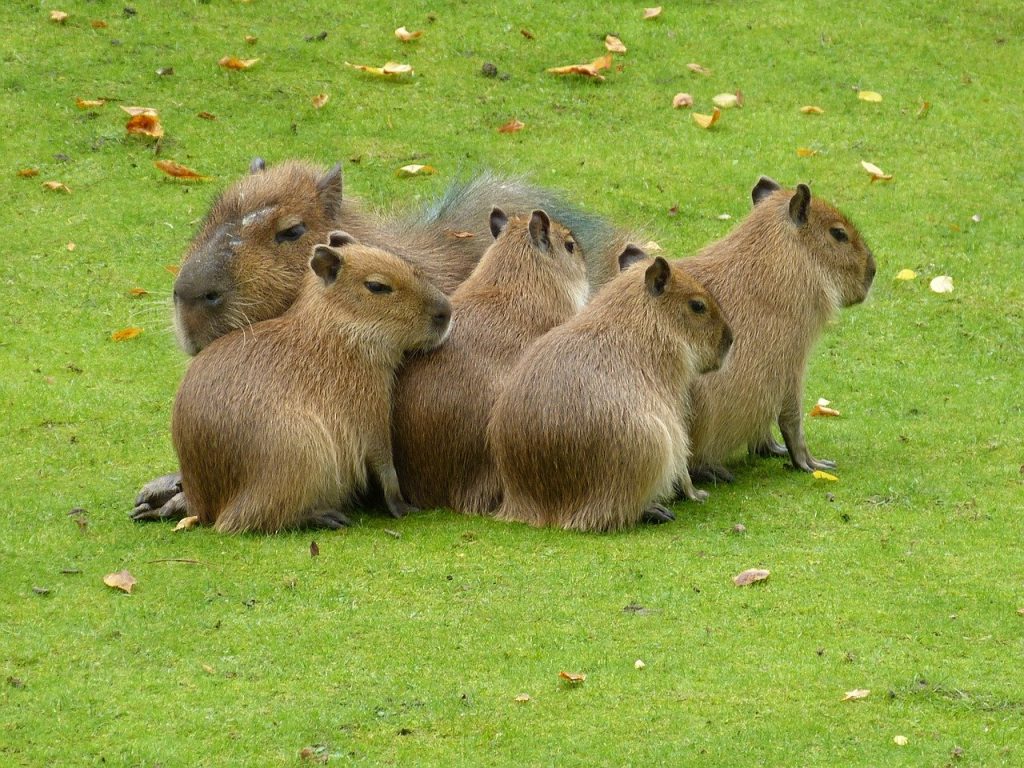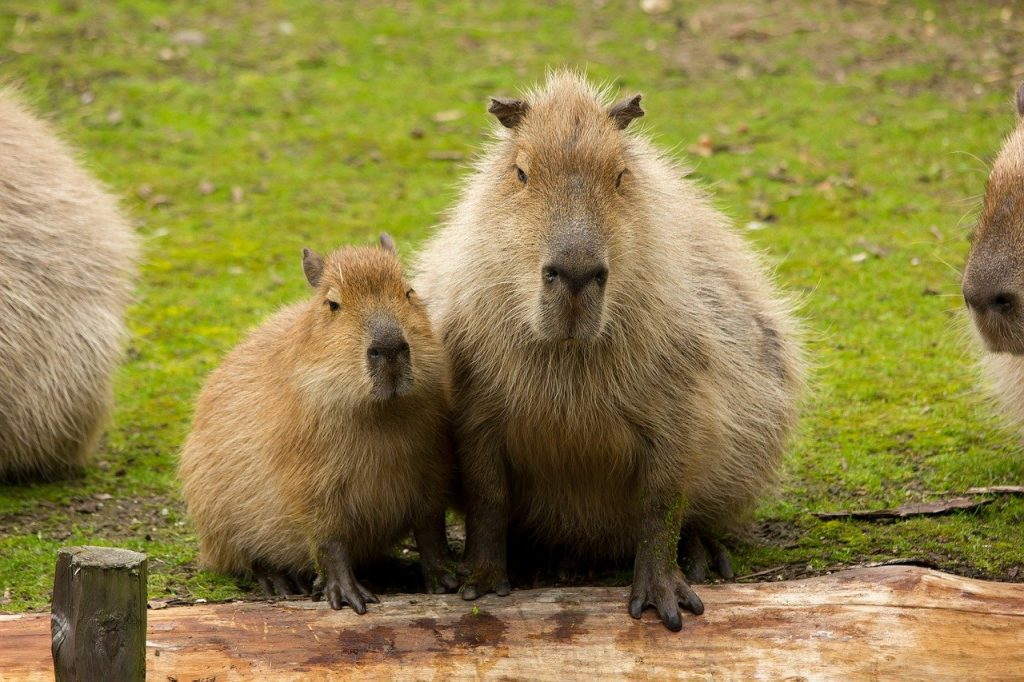Being mammals, baby capybaras are born on land and the newborn babies can join the large family a bit later when they can make their first steps. For the first week they only suck milk from a female, after which they start also eating grass. This mixed diet can continue for about 16 weeks when they drop sucking.
Baby Capybara Interesting Facts:
Baby capybara doesn’t suck only from its mother but from any female in the group. This means they live in a big family, with many babies, and they share everything including mother’s care.
Baby capybaras are grow and learn very fast, which means in one week they are ready to eat alone, to walk and join de group.
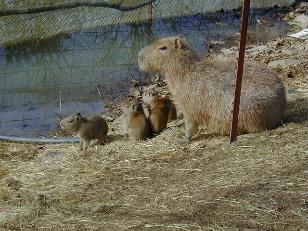
The babies in the photo were born in the early morning. They are born with a full set of fur, opened eyes, and full set of teeth. In the photo they are only a few hours old. They are very good swimmers at birth.
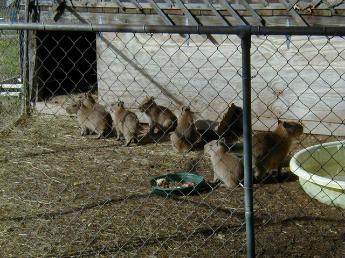
Infant capys (at least a week old) must have a source of heat and water available. New born capybaras need to be left with their mothers for at least a week for a good start in life.
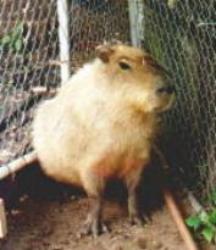
This mother capybara is taking a break from her her babies. She had seven new born capybaras..
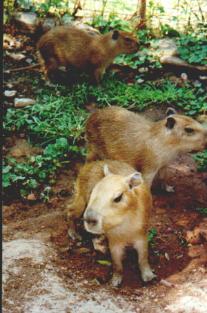
This baby capybaras are enjoying the shade of the trees in the back yard.
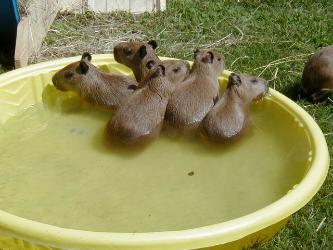
Wading pools make great swimming areas for the babies. They will get in a pool on their first day of birth. They can swim very well as infants.
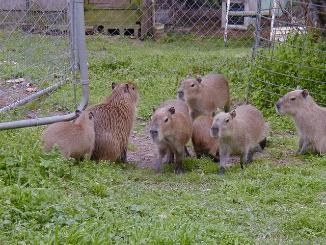
A small group of capy babies exploring the back yard.
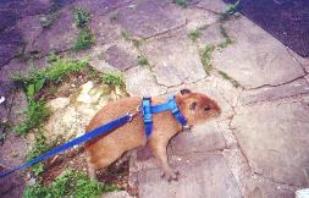
As pets baby capybaras prefer to be the boss and will bond and become your friend when they want too. A food source makes a great bribe.
Feeding and care of Baby Capybaras
It is advised to no take the babies away from their mothers before the age of 7 to 14 days of age. Special care must be taken to assure their survival. Learn more about capybara as pets.
Simple Care:
Life begins in a confined area. They spend the first few days in a heated cage with plastic over the wire and covered with dry towels. They have a pan of warm water on one end of the cage. From day one they are given warm milk with sugar added to the
milk with Puppy Chow sprinkled over the milk. We use the calf milk replacer from the feed store. Food is placed in the pen, it consist of fruit and vegetables chopped. Corn on the cob is by far their favorite food.
As soon as they are eating and drinking which is usually a few days they are then placed in the yard. As babies they need a source of heat and a heat lamp will be fine. Any type of housing will work. We place hay in their house as they do like to nibble that too.
WATER is a must and any type of watering pan will do. A wading pool, wash tub, or even old bath tubs work well.
DON’T FORGET TO make sure your pen area is secure. Any weak area will be found from day one. They are not climbers, but they really do like to crawl under or push out on any fence. They will run and hit the fence. They will run the fence too. It will take them a day or two to get used to their new home. Whistles and talking to them will help to calm them if they are nervous. The more you react to them the sooner they will bond with you.
They love grass and the fruit and vegetables and need them as their mother teaches them to eat well. They need lots of fiber. Their stools may get “runny” but that is okay, it is what they are eating.
Milk is given to them until they decide they do not want it, usually 5 to 6 months of age. This is their growing time. We supplement cattle creeper feed to the babies as well as the adults. They will learn to eat from a dog feeder.
Good nutrient and clean water will result happy, healthy young capybaras. HEAT in the winter, shade in the summer is their favorite luxury in life. They need enough room to room and play.
If you want you can give them a bottle, it takes a little work but they will suck one. A regular baby bottle is great.
Read more about taking care of capybaras on our Pet Capybara page.
Cute Baby Capys Photos
